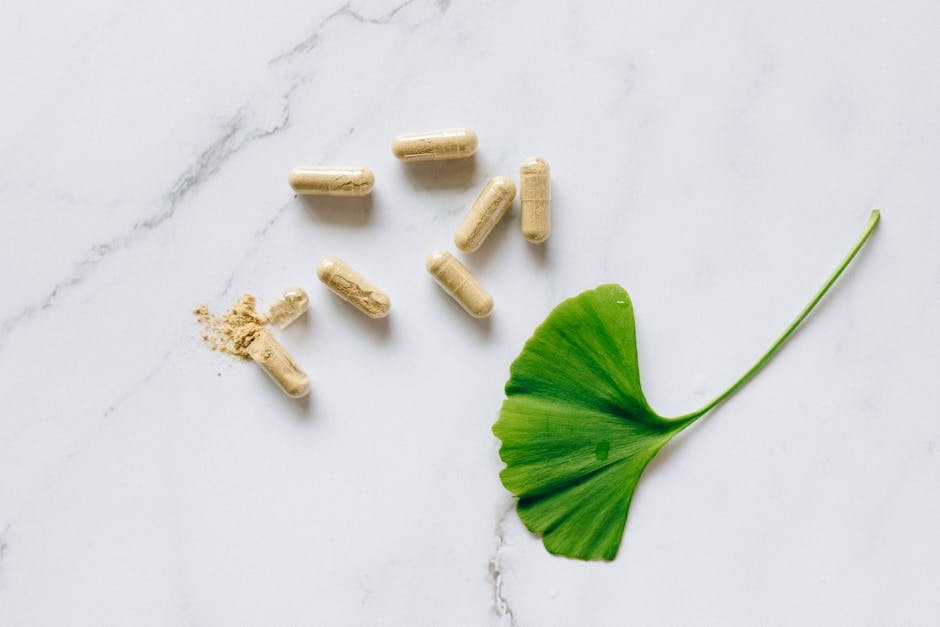The Power of Matcha: Health Benefits and Uses of Camellia Sinensis Leaf Powder
Are you looking for a natural way to improve your health and well-being? Look no further than camellia sinensis leaf powder, also known as green tea powder or matcha. This versatile ingredient is made from ground green tea leaves and is packed with health benefits that have been backed by scientific research.
Antioxidant Richness
One of the key benefits of camellia sinensis leaf powder is its high antioxidant content, particularly in the form of catechins. These powerful compounds have been linked to a variety of health benefits, including:
- Reducing the risk of heart disease
- Lowering the risk of stroke
- Helping to prevent certain types of cancer
Regular consumption of green tea has been shown to provide these health benefits, and camellia sinensis leaf powder provides an easy and convenient way to incorporate green tea into your diet.
Natural Energy Boost
Camellia sinensis leaf powder also contains caffeine, which can provide a natural energy boost without the jittery feeling often associated with coffee. This makes it a great choice for those looking for a natural way to increase their energy levels, without the negative side effects of caffeine.
Relaxation and Stress Reduction
In addition to its energizing effects, camellia sinensis leaf powder also contains theanine, an amino acid that promotes relaxation and reduces stress. This makes it a great choice for those looking for a natural way to de-stress and unwind.
Versatile Uses
Camellia sinensis leaf powder can be used in a variety of ways, making it a versatile ingredient to have in your pantry. Some popular uses include:
- In smoothies or other drinks
- Baked goods, such as cookies or cakes
- As a face mask for skincare benefits
With its holistic approach to wellness, it’s no wonder that camellia sinensis leaf powder has become a popular choice for those looking to improve their overall health and well-being.
Conclusion
Camellia sinensis leaf powder, also known as green tea powder or matcha, is a versatile ingredient that provides a variety of health benefits. From its antioxidant richness to its natural energy boost and stress-reducing properties, it’s no wonder that it has become a popular choice for those looking to improve their overall health and well-being. Try incorporating camellia sinensis leaf powder into your diet today and experience the power of matcha for yourself!
Uncovering the Secrets of Camellia Sinensis: The Plant Behind All Types of Tea
Tea, beloved by many for its soothing and invigorating qualities, is a beverage that has been enjoyed for centuries. But do you know the plant behind all types of tea? Meet Camellia sinensis, the versatile plant species responsible for the creation of green, black, white, oolong, and other teas.
How Different Types of Tea Are Created
The flavor and characteristics of tea are largely determined by the processing methods used on the Camellia sinensis leaves. Green tea, for example, is made by steaming or pan-frying the leaves to prevent oxidation, which results in a light and grassy flavor. In contrast, black tea is made by fully oxidizing the leaves, which creates a stronger and more robust flavor. Other types of tea, such as white and oolong, fall somewhere in between the processing methods of green and black tea.
It’s fascinating to think that all these different teas come from the same plant species, but the different processing methods result in such distinct flavors and characteristics.
Camellia Sinensis Leaf Powder
Camellia sinensis leaf powder is a popular ingredient in health and beauty products, as well as in culinary creations. This powder can come from any of the different types of tea, depending on which leaves are used and how they are processed. Some companies may specify which type of tea their leaf powder comes from, while others may simply label it as “Camellia sinensis leaf powder” without specifying the type.
Regardless of the type of tea, Camellia sinensis leaf powder is rich in antioxidants and other beneficial compounds. It’s no wonder that it’s become such a sought-after ingredient in various industries.
Final Thoughts
Camellia sinensis may not be a household name, but it’s a plant species that has had a profound impact on the world of tea. The different processing methods used on its leaves result in the creation of so many different types of tea, each with its own unique flavor and characteristics. And let’s not forget about Camellia sinensis leaf powder, an ingredient that has found its way into a variety of products. So the next time you sip on a cup of tea or use a product containing Camellia sinensis leaf powder, take a moment to appreciate the versatility and beauty of this incredible plant species.
Brewing the Perfect Cup of Camellia Sinensis Leaf Powder Tea
Camellia sinensis leaf powder tea, also known as matcha, is a popular beverage known for its unique taste and numerous health benefits. However, brewing the perfect cup of matcha can be tricky, as the quality of the powder and the brewing process greatly affect the taste. In this article, we’ll share some tips and tricks for brewing the perfect cup of camellia sinensis leaf powder tea.
Start with High-Quality Camellia Sinensis Leaf Powder
The quality of the powder is crucial in determining the taste of your tea. Look for powders made from fresh, young leaves and avoid any that have been exposed to too much heat or sunlight. This ensures that the tea is not too bitter or over-roasted, which can ruin the taste.

Use the Right Amount of Powder
Typically, one teaspoon of powder per 8 ounces of water is a good starting point. However, you may need to adjust this depending on your preferences and the strength of the powder you’re using.
Choose the Right Temperature
The ideal temperature for brewing camellia sinensis leaf powder tea is around 175-185F (79-85C). Anything hotter can scorch the leaves and ruin the taste.
Steep for the Right Amount of Time
The longer you steep the tea, the stronger it will be. Generally, you’ll want to steep camellia sinensis leaf powder tea for 1-2 minutes. However, you may need to adjust this based on your preferences and the strength of your powder.
Use the Right Equipment
For best results, use a tea infuser or strainer to keep the powder from getting into your cup. You can also use a matcha whisk to help mix the powder evenly into the water.
Experiment with Different Additions
While camellia sinensis leaf powder tea is delicious on its own, you can also experiment with adding things like honey, milk, or spices like ginger or cinnamon to enhance the flavor. Just be sure to add these after you’ve steeped the tea, not before.
Enjoy Immediately
Camellia sinensis leaf powder tea is best enjoyed immediately after brewing. If you let it sit for too long, the taste can become bitter or stale.
Conclusion
Brewing the perfect cup of camellia sinensis leaf powder tea requires attention to detail and high-quality ingredients. By following these tips, you can create a delicious and healthy beverage that you’ll enjoy drinking every time.
Discovering the Fascinating World of Camellia Sinensis: The Plant Behind Our Beloved Teas
Tea is one of the most popular and beloved beverages in the world. Whether you prefer a steaming cup of green tea in the morning or a refreshing glass of iced tea on a hot summer day, there’s no denying the soothing and comforting effect that tea has on our minds and bodies. But have you ever stopped to wonder where tea comes from and how it’s made? In this blog post, we’ll take a closer look at Camellia sinensis, the plant species that is responsible for producing the different varieties of tea that we know and love.
Camellia Sinensis: A Brief Introduction
Camellia sinensis is a plant species that is native to East and Southeast Asia, including China, Japan, Korea, and India. It’s an evergreen shrub that can grow up to 9 meters tall, with dark green leaves and white flowers. The leaves of this plant are the key ingredient in the production of tea, and depending on the processing method, they can be used to make green tea, black tea, white tea, and oolong tea.
The Cultural Significance of Camellia Sinensis in Asia
Camellia sinensis has a long and rich history in many Asian countries, where tea is not just a beverage but also a symbol of cultural identity and heritage. In China, for example, tea has been consumed for over 5,000 years and is deeply ingrained in the country’s philosophy, literature, and art. Tea ceremonies, which involve the preparation and serving of tea in a formal and ritualistic way, are also an important part of the cultural heritage of many Asian countries, including Japan and Korea.
The Introduction of Tea to the West
Camellia sinensis was introduced to the West in the 16th century by Portuguese traders, and tea soon became a popular beverage in Europe and the United States. The popularity of tea in the West led to the establishment of tea plantations in countries such as India, Sri Lanka, and Kenya, which are now major tea producers and exporters.
The Health Benefits of Camellia Sinensis
Aside from its cultural and historical significance, Camellia sinensis is also known for its many health benefits. Studies have shown that drinking tea can help reduce the risk of heart disease, stroke, and certain types of cancer. Tea is also rich in antioxidants, which can help protect our cells from damage caused by free radicals. Additionally, tea contains caffeine, which can help improve mental alertness and cognitive function.
Conclusion
Camellia sinensis is a fascinating and versatile plant that has played a significant role in the cultural, historical, and health aspects of many societies around the world. Whether you prefer a cup of green tea, black tea, white tea, or oolong tea, it’s worth taking a moment to appreciate the plant behind the beverage. So the next time you sit down with your favorite tea, remember to thank Camellia sinensis for its wonderful gift to humanity.


Leave a Reply